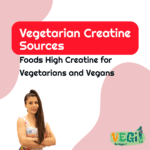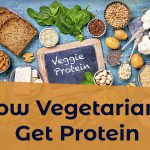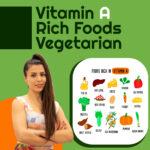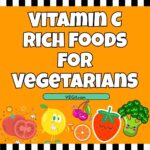7 Low Carb Vegetarian Foods You Will Love
Healthy Low-Carb, High-Protein Foods to Include in Your Vegetarian Diet
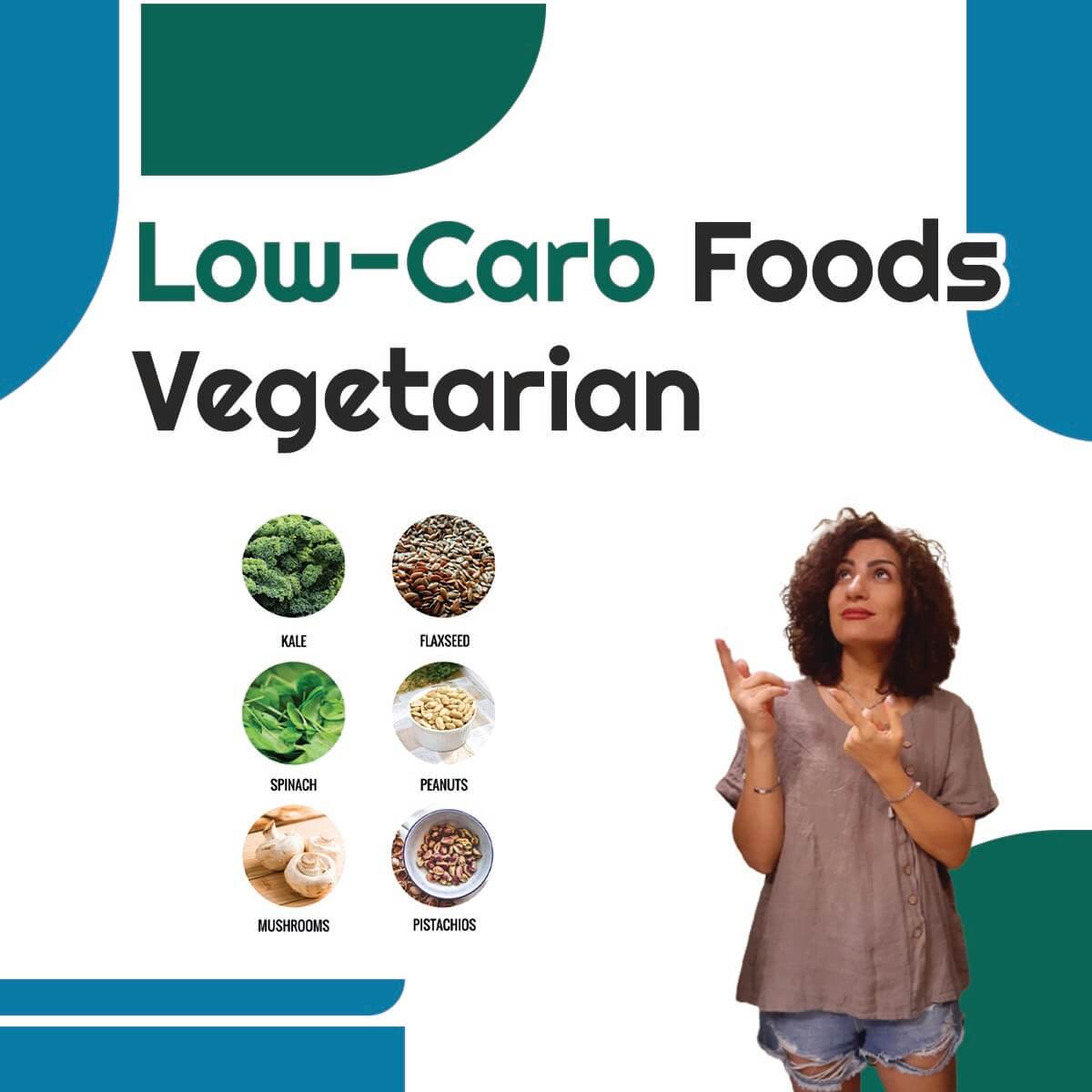
There are more than a few reasons why the diet of vegetarians is well-regarded. There’s no denying that the vegetarian diet has plenty of benefits, not least of which being its potential to lower risk for a number of diseases and conditions.
The benefits of a vegetarian diet are numerous: It can lower your risk for developing chronic diseases such as hypertension, type 2 diabetes, and even cancer. A vegetarian diet can also help you lose weight, increase intake of essential nutrients such as vitamins C and E, iron, and folate (vitamin B9), and generally improve your health.
However, if you’re thinking about becoming a vegetarian or trying it out for the first time, you might be wondering what foods you should eat to meet your new dietary goals.
In this article you will read:
7 Low Carb Vegetarian Foods For The Healthy Vegan on your List
Going vegan and following a low-carb diet can be tricky. But not impossible. There are plenty of plant-based foods that fall into the carb-restricted category, like fruits, vegetables, and legumes (beans, chickpeas, lentils, etc.). These foods are also rich in nutrients and vitamins without the added sugars or fats that come from animal products. And with a little creativity and planning, anyone can follow a vegetarian or vegan low-carb diet. To do so successfully requires some strategy. The key is to choose foods that fit your macronutrient needs while keeping your calorie count in check. Here’s a list of 7 low-carb vegetarian foods for the healthy vegan on your list:
Dark Leafy Greens
Not every green is low-carb, so you need to be careful. Collard greens, Swiss chard, bok choy, and spinach are all low-carb options. Kale is not as low-carb as the other greens listed, so it’s not a good option for low-carb eaters. You can use these greens in a variety of ways, from salads to soups to omelets. They’re also versatile enough to use in any season. Greens are a rich source of vitamins and minerals like vitamins A, C, and K, manganese, iron, and calcium. They’re also high in fiber, which is essential for a healthy digestive system and can help you feel full longer.
Whole Grains (Brown Rice, Quinoa, etc.)
Whole grains are a great low-carb option, but you have to be careful about which varieties you choose. Not all grains are low in carbs, so the nutritional label is important here. Look for brown rice, quinoa, oats, and millet. You can use grains in a variety of ways, from side dishes to salads to casseroles. Whole grains are a good source of fiber and B vitamins. They’re also rich in minerals like manganese, magnesium, and iron.
| Row | Grains and Pasta Lowest in Carbohydrate | Carbs per 100 g |
| 1 | Cooked Oat Bran | 11.4g (4% DV) |
| 2 | Cooked Oatmeal | 12g (4% DV) |
| 3 | Vital Wheat Gluten | 13.8g (5% DV) |
| 4 | Yellow Cornmeal (Grits) | 13.9g (5% DV) |
| 5 | Cooked Bulgur | 18.6g (6% DV) |
| 6 | Roasted Buckwheat Groats | 19.9g (7% DV) |
| 7 | Rice White Glutinous | 21.1g (7% DV) |
| 8 | Cooked Wild Rice | 21.3g (7% DV) |
| 9 | Quinoa Cooked | 21.3g (7% DV) |
| 10 | Cooked Couscous | 23.2g (8% DV) |
| 11 | Cooked Brown Rice | 23.5g (8% DV) |
| 12 | Pasta Homemade | 23.5g (8% DV) |
| 13 | Cooked Millet | 23.7g (8% DV) |
| 14 | Rice Noodles | 24g (8% DV) |
| 15 | Kamut Cooked | 27.6g (9% DV) |
I suggest you don’t miss this interesting article: Foods High in CoQ10 for Vegetarians and Vegans
Beans and Legumes
Beans and legumes are excellent sources of fiber, protein, and iron. They’re also low in calories, making them a good choice for low-carb diets. Beans and legumes can be prepared in many different ways, including baked beans, black bean burgers, and hummus. They can also be added to casseroles, soups, and salads. Beans and legumes are great for vegetarians who want to lose weight. Beans and legumes are low in fat and calories, and they’re packed with fiber and protein. They’re also rich in minerals and B vitamins.
Here are some low-carb beans and lentils
- Edamame – 13.8g (5% DV) in 1 cup
- Okara – 14.9g (5% DV) in 1 cup
- Lupin Beans (Cooked) – 15.4g (5% DV) in 1 cup
- Cooked Green Soybeans – 19.9g (7% DV) in 1 cup
- Fava Beans (Raw) – 22.2g (7% DV) in 1 cup
- Winged Beans Mature Seeds – 25.7g (9% DV) in 1 cup
- Green Soybeans – 28.3g (9% DV) in 1 cup
Vegetarian Snacks and Condiments
Nuts, seeds, olives, and nut butter are all rich in protein and make excellent low-carb vegetarian snacks. They’re high in fiber, vitamins, and minerals. They can be eaten as a quick side or by themselves as a snack. Vegetable-based dips, like hummus and guacamole, are also good low-carb additions to any menu. Vegetarian snacks are packed with vitamins, minerals, and protein. They’re also low in calories and make great additions to low-carb diets. Vegetable-based dips are also good sources of fiber.
Veggies That Are High in Fiber and low in carbohydrates
Bell peppers, broccoli, carrots, cucumbers, and zucchini are all good low-carb choices. They contain fiber, vitamins, minerals, and antioxidants. The best thing about these veggies is that they can be eaten raw or cooked and incorporated into many different types of dishes. They’re suitable for a variety of different diets and can be eaten as a side or a main course. Vegetables are rich in fiber, which is essential for a healthy digestive system. They’re also a good source of vitamins and minerals. Many vegetables are low in calories, making them a great addition to low-carb diets.
40 vegetables with the lowest amount of carbohydrates
| Row | Vegetables Lowest in Carbohydrate | Amount per Serving Size |
| 1 | Enoki Mushrooms | 0.4g (0% DV) in 1 large |
| 2 | Squash Zucchini Baby Raw | 0.5g (0% DV) in 1 large |
| 3 | Red Leaf Lettuce | 0.6g (0% DV) in 1 cup shredded |
| 4 | Seaweed Agar Raw | 0.7g (0% DV) in 2 tbsp (1/8 cup) |
| 5 | Kale |
0.7g (0% DV) in 1 cup 1 inch pieces, loosely packed
|
| 6 | Carrots | 0.8g (0% DV) in 1 tbsp |
| 7 | Wakame | 0.9g (0% DV) in 2 tbsp (1/8 cup) |
| 8 | Pumpkin Leaves | 0.9g (0% DV) in 1 cup |
| 9 | Jalapeno Peppers | 0.9g (0% DV) in 1 pepper |
| 10 | Kelp Seaweed | 1g (0% DV) in 2 tbsp (1/8 cup) |
| 11 | Garlic | 1g (0% DV) in 1 clove |
| 12 | Green Leaf Lettuce | 1g (0% DV) in 1 cup shredded |
| 13 | Spinach | 1.1g (0% DV) in 1 cup |
| 14 | Pumpkin Flowers | 1.1g (0% DV) in 1 cup |
| 15 | Broccoli Raab (Rapini) | 1.1g (0% DV) in 1 cup chopped |
| 16 | Cooked Pumpkin Flowers | 4.4g (1% DV) in 1 cup |
| 17 | Mung Beans Mature Seeds Sprouted | 4.5g (1% DV) in 1 cup |
| 18 | Gourd White-Flowered (Calabash) | 4.5g (2% DV) in 1 cup (1 inch cubes) |
| 19 | Cooked Escarole | 4.6g (2% DV) in 1 cup |
| 20 | Oriental Radishes | 4.8g (2% DV) in 1 cup slices |
| 21 | Eggplant | 4.8g (2% DV) in 1 cup, cubes |
| 22 | Snow Peas | 4.8g (2% DV) in 1 cup, whole |
| 23 | Cooked Zucchini | 4.8g (2% DV) in 1 cup, sliced |
| 24 | Crookneck Summer Squash | 4.9g (2% DV) in 1 cup sliced |
| 25 | Sauteed Green Bell Peppers | 4.9g (2% DV) in 1 cup chopped |
| 26 | Broccoli Cooked | 4.9g (2% DV) in 1/2 cup |
| 27 | Maitake Mushrooms | 4.9g (2% DV) in 1 cup diced |
| 28 | Cooked Cauliflower | 5.1g (2% DV) in 1 cup |
| 29 | Oyster Mushrooms | 5.2g (2% DV) in 1 cup sliced |
| 30 | Asparagus | 5.2g (2% DV) in 1 cup |
| 31 | Cabbage | 5.2g (2% DV) in 1 cup, chopped |
| 32 | Mushrooms Portobellos Grilled | 5.4g (2% DV) in 1 cup sliced |
| 33 | Tomatoes | 5.8g (2% DV) in 1 cup cherry tomatoes |
| 34 | Cooked Okra | 5.9g (2% DV) in 1/2 cup slices |
| 35 | Cooked Celery | 6g (2% DV) in 1 cup, diced |
| 36 | Sauerkraut | 6.1g (2% DV) in 1 cup |
| 37 | Mung Bean Sprouts | 6.2g (2% DV) in 1 cup |
| 38 | Green Tomatoes | 6.3g (2% DV) in 1 medium |
| 39 | Cooked Turnip Greens | 6.3g (2% DV) in 1 cup, chopped |
| 40 | Artichokes (Globe Or French) Frozen Unprepared | 6.5g (2% DV) in 1/3 package |
List of fruits Lowest in Carbohydrate and Fruits Highest in Fiber
Fruit is a low-carb, high-fiber food. It’s also one of the few sources of antioxidants, vitamins and minerals in our diets.
To keep your body running at its best, eat a variety of fruits and vegetables every day.
Choose low-carb fruits like berries and plums when you’re looking to stay on track with weight loss goals.
And don’t forget about the fiber! Fiber helps keep your digestive system running smoothly, so it’s important to get enough every day.
Fiber makes up around 5 percent of your daily diet, so it’s easy to add more into your diet by eating a wide range of foods including whole grains, fruits and vegetables.
| Row | Fruits Lowest in Carbohydrate | Carbs per 100 g |
| 1 | Green Olives | 3.8g (1% DV) |
| 2 | Rhubarb | 4.5g (2% DV) |
| 3 | Rose Apples | 5.7g (2% DV) |
| 4 | Casaba Melon | 6.6g (2% DV) |
| 5 | Starfruit (Carambola) | 6.7g (2% DV) |
| 6 | Oheloberries | 6.8g (2% DV) |
| 7 | Florida Grapefruit | 7.5g (3% DV) |
| 8 | Pitanga | 7.5g (2% DV) |
| 9 | Watermelon | 7.6g (3% DV) |
| 10 | Horned Melon | 7.6g (3% DV) |
| 11 | Strawberries | 7.7g (3% DV) |
| 12 | Melon Balls | 7.9g (3% DV) |
| 13 | Grapefruit | 8.1g (3% DV) |
| 14 | Cantaloupe Melons | 8.2g (3% DV) |
| 15 | Avocados | 8.5g (3% DV) |
300g Carbohydrate = 100% DV
Fruits Highest in Fiber
| Row | Fruits Highest in Fiber | Fiber per 100 g |
| 1 | Persimmons Japanese Dried | 14.5g (52% DV) |
| 2 | Goji Berries Dried | 13g (46% DV) |
| 3 | Dried Bananas | 9.9g (35% DV) |
| 4 | Dried Figs | 9.8g (35% DV) |
| 5 | Dried Apples | 8.7g (31% DV) |
| 6 | Dried Peaches | 8.2g (29% DV) |
| 7 | Dried Pears | 7.5g (27% DV) |
| 8 | Dried Blueberries | 7.5g (27% DV) |
| 9 | Dried Apricots | 7.3g (26% DV) |
| 10 | Prunes | 7.1g (25% DV) |
| 11 | Elderberries | 7g (25% DV) |
| 12 | California Avocados | 6.8g (24% DV) |
| 13 | Raisins Seeded | 6.8g (24% DV) |
| 14 | Avocados | 6.7g (24% DV) |
| 15 | Raspberries | 6.5g (23% DV) |
| 16 | Kumquats | 6.5g (23% DV) |
| 17 | Feijoa | 6.4g (23% DV) |
| 18 | Rowal | 6.2g (22% DV) |
| 19 | Dried Jujube | 6g (21% DV) |
| 20 | Guavas | 5.4g (19% DV) |
| 21 | Strawberry Guavas | 5.4g (19% DV) |
| 22 | Sapodilla | 5.3g (19% DV) |
| 23 | Abiyuch | 5.3g (19% DV) |
| 24 | Blackberries | 5.3g (19% DV) |
| 25 | Dried Cranberries | 5.3g (19% DV) |
| 26 | Breadfruit | 4.9g (18% DV) |
| 27 | Dried Litchis | 4.6g (16% DV) |
| 28 | Raisins | 4.5g (16% DV) |
| 29 | Wild Blueberries | 4.4g (16% DV) |
| 30 | Zante Currants | 4.4g (16% DV) |
| 31 | Sugar Apples | 4.4g (16% DV) |
| 32 | Red And White Currants | 4.3g (15% DV) |
| 33 | Gooseberries | 4.3g (15% DV) |
| 34 | Pomegranates | 4g (14% DV) |
| 35 | Muscadine Grapes | 3.9g (14% DV) |
| 36 | Durian | 3.8g (14% DV) |
| 37 | Prickly Pears | 3.6g (13% DV) |
| 38 | Cranberries | 3.6g (13% DV) |
| 39 | Fuyu Persimmon | 3.6g (13% DV) |
| 40 | Asian Pears | 3.6g (13% DV) |
| 41 | Soursop | 3.3g (12% DV) |
| 42 | Green Olives | 3.3g (12% DV) |
| 43 | Pears | 3.1g (11% DV) |
| 44 | Mammy Apple | 3g (11% DV) |
28g Fiber = 100% DV
Nuts and Seeds
Nuts and seeds are a good low-carb option, but you need to be careful about portion sizes. You can eat a small number of nuts or seeds as a snack or add them to salads. Avoid adding them to casseroles since they’re very high in fat. Nuts and seeds are high in protein and make a good addition to any diet, including low-carb diets. They’re also rich in vitamins and minerals. They’re also high in fat, so they should be eaten in moderation.
28 Nuts and Seeds Lowest in Carbohydrate
| Row | Nuts and Seeds Lowest in Carbohydrate | Amount per Serving Size |
| 1 | Dried Pilinuts | 1.1g (0% DV) in 1 oz (15 kernels) |
| 2 | Seeds Sesame Seeds | 2.1g (1% DV) in 1 tbsp |
| 3 | Seeds Cottonseed Kernels Roasted (Glandless) | 2.2g (1% DV) in 1 tbsp |
| 4 | Hemp Seeds | 2.5g (1% DV) in 1oz |
| 5 | Seeds Sesame Butter Tahini From Unroasted Kernels | 2.5g (1% DV) in 1 tbsp |
| 6 | Black Walnuts (Dried) | 2.7g (1% DV) in 1 oz |
| 7 | Dried Pumpkin And Squash Seeds | 3g (1% DV) in 1 oz |
| 8 | Almond Butter | 3g (1% DV) in 1 tbsp |
| 9 | Nuts Almond Butter Plain | 3g (1% DV) in 1 tbsp |
| 10 | Sesame Butter (Tahini) | 3.2g (1% DV) in 1 tbsp |
| 11 | Brazilnuts | 3.3g (1% DV) in 1 oz (6 kernels) |
| 12 | Butternuts (Dried) | 3.4g (1% DV) in 1 oz |
| 13 | Boiled Japanese Chestnuts | 3.6g (1% DV) in 1 oz |
| 14 | Pine Nuts (Dried) | 3.7g (1% DV) in 1 oz (167 kernels) |
| 15 | Seeds Sunflower Seed Butter | 3.7g (1% DV) in 1 tbsp |
| 16 | Dry Roasted Macadamia Nuts | 3.8g (1% DV) in 1 oz (10-12 kernels) |
| 17 | Dry Roasted Pecans | 3.8g (1% DV) in 1 oz |
| 18 | Seeds Sesame Butter Paste | 3.8g (1% DV) in 1 tbsp |
| 19 | Nuts Pecans Dry Roasted | 3.8g (1% DV) in 1 oz |
| 20 | Macadamia Nuts | 3.9g (1% DV) in 1 oz (10-12 kernels) |
| 21 | Pecans | 3.9g (1% DV) in 1 oz (19 halves) |
| 22 | Walnuts | 3.9g (1% DV) in 1 oz (14 halves) |
| 23 | Roasted Squash And Pumpkin Seeds | 4.2g (1% DV) in 1 oz |
| 24 | Seeds Watermelon Seed Kernels Dried | 4.3g (1% DV) in 1 oz |
| 25 | Hazelnuts | 4.7g (2% DV) in 1 oz (21 whole kernels) |
| 26 | Nuts Hazelnuts Or Filberts Blanched | 4.8g (2% DV) in 1 oz |
| 27 | Lotus Seeds | 4.9g (2% DV) in 1 oz |
| 28 | Dry Roasted Hazelnuts | 5g (2% DV) in 1 oz |

Vegan Foods Lowest in Carbohydrate
Vegan foods are foods that do not contain any animal products. These foods can be made from plants like fruits, vegetables, grains and legumes. As a result of being vegan, these foods are low in carbohydrates. Some examples of vegan foods include beans, tofu and nuts. In addition to being low in carbohydrates, vegan foods are also rich in fiber. Fiber is essential for healthy digestion and helps to regulate blood sugar levels. Fiber also promotes satiety and keeps you feeling full after eating.
You should choose to eat a plant-based diet if you have health conditions that require you to limit your carbohydrate intake. Additionally, if you follow a vegan diet for ethical reasons, you will be able to reduce the amount of animal products in your diet.
Low-Carb Vegetarian Meals That Are Easy on Your Wallet
When you’re on a budget, it can be difficult to find food that is both healthy and affordable.
One way to keep costs low while still making sure that you are getting some good nutrients into your diet is to choose vegetarian meals whenever possible. Vegetarian meals tend food items like vegetables, grains, and beans, meaning that they are generally cheaper than meals that include meat or other animal products.
Fortunately, there are plenty of low-carb vegetarian meals that fit the bill. Many of these dishes are simple and inexpensive, making them perfect for people on tight budgets. In addition, many of these meals are easy to make at home. If you’re short on time, this is an ideal option. Of course, there are other factors to consider when choosing low-carb vegetarian meals that are easy on the wallet. For example, some people prefer higher-quality ingredients over lower prices. If this sounds like you, be sure to choose a meal with fresh ingredients. Another thing to keep in mind is portion size. While most low-carb vegetarian meals are smaller than traditional meals, they still require some food preparation and cleaning up afterwards.
Which vegetarian food has low carbs?
- Some vegetarian foods with low carbs include lentils, black beans, chickpeas, and quinoa.
Are bananas low-carb?
- Yes, bananas are a low-carb food. They have a low glycemic index, which means they raise blood sugar slowly, which is a good thing for people with diabetes.
They are a good source of potassium, dietary fiber, vitamins C and B6, and magnesium.
What is high protein low-carb vegetarian?
- A high protein low-carb vegetarian diet typically includes plant-based proteins, such as tofu, tempeh, seitan, and legumes, in place of meats. This type of diet can help to promote weight loss and improve blood sugar control.
This type of diet can help to improve your health by helping to maintain your weight, reducing your risk of diseases such as heart disease, and helping to improve your mood and energy levels.
What food have no-carb?
Some food items that have no-carb are:
– most vegetables
– most fruits
– most beans and legumes
[amazon_auto_links id=”1685″]
Summary
When you’re vegan or vegetarian, you tend to get asked questions like “Where do you get your protein?” A fair question. Protein is the cornerstone of a healthy diet. When following a vegetarian or vegan diet, it can be challenging to meet your daily protein intake. However, if you know what foods to add and which foods to avoid, it’s easy to stay in-line with your dietary restrictions while also meeting your protein needs. Eating a plant-based diet can help reduce your risk for diseases like heart disease, diabetes and hypertension. Whether you follow a vegan or just want to eat less meat—there are so many benefits from going plant-based! With this blog post we will reveal 7 ways how being low carb vegetarian can be beneficial for your health ^^
The challenge with following a vegetarian or vegan diet is that it tends to be lower in protein than other diets. Having a well-planned vegetarian diet, though, is not only possible but also extremely healthy. With a little preparation and knowledge, you can craft a vegetarian diet that’s just as tasty and nutritious as any other.
We also published a table of foods with the lowest carbohydrates so that you can plan your diet.
Remember to give me feedback in the comments below this post



